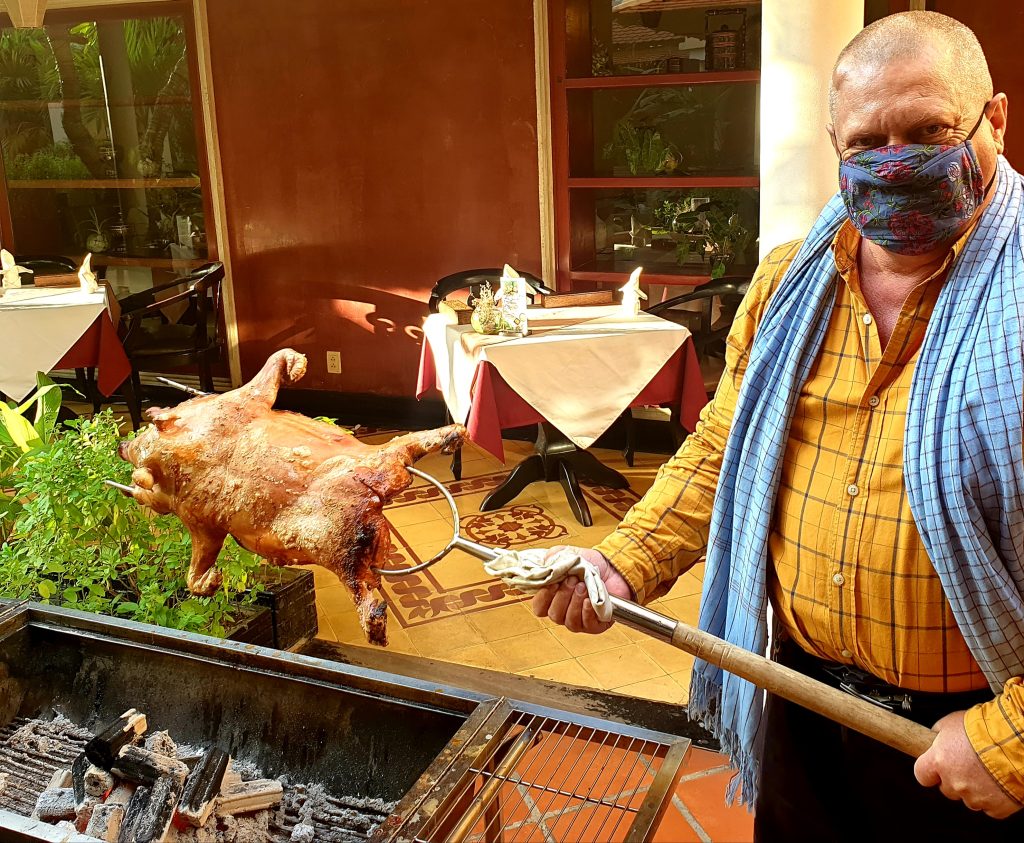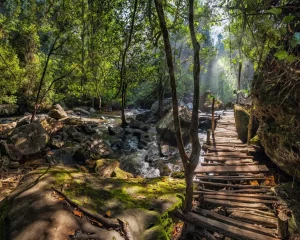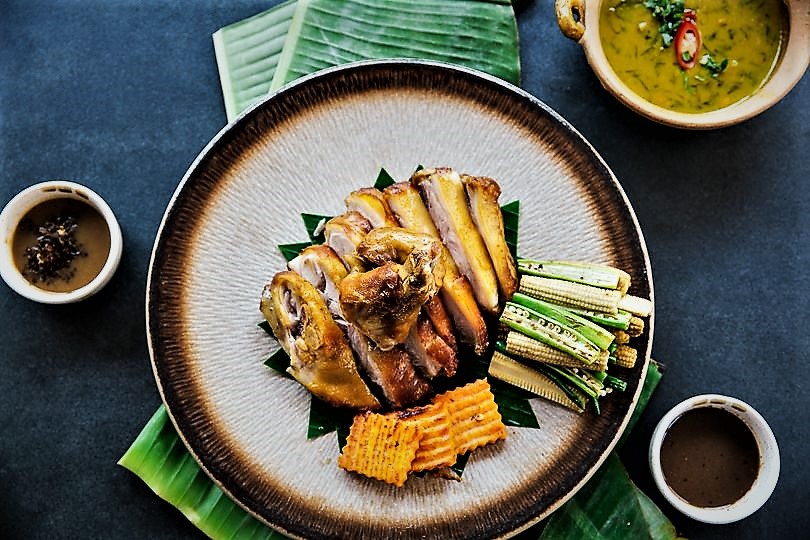
Mahendraparvata: City of the Gods
Jayavarman II, -after an elaborate spiritual ceremony, that included rituals performed by Brahman Hiranyadama- rose himself up above the crowd that had gathered atop Mount Kulen, (Phnom Kulen) having just been crowned a deva raja, (god-king) a Chakravarti, (lord of the universe), it is the year 802 AD.
Jayavarman II had returned to this land -then known as Chenla- from exile in Java; at the time of his return, Chenla was under the control of the Shailendra, a dynasty of Javanese kings. He built a strong power base by conquering and uniting a patchwork of small fiefdoms in the area, rapidly rising up to rule them all.
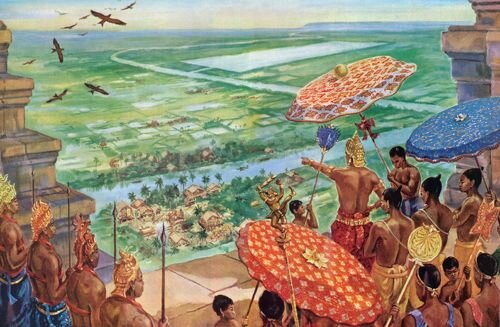
An inscription from the temple at Sdok Kok Thom recounts the story of the ritual that day in 802, atop the sacred mountain, then known as Mahendraparvata, (Mountain of the Great Indra). Jayavarman II declared independence from ‘Java’, and a new nation was born, the Khmer Empire, and it would expand and dominate over South East Asia for the next 600 years.
The Khmer Empire, (802 CE to 1431) would go on to become the largest in South East Asia, incorporating the lands of Cambodia, Vietnam, Laos, Thailand, Myanmar, and parts of Southwestern China. The capital would move to Angkor; where the ruler Suryavarman II would construct the stunning temple Angkor Wat, a microcosm of the Hindu universe and the largest religious complex on the planet.
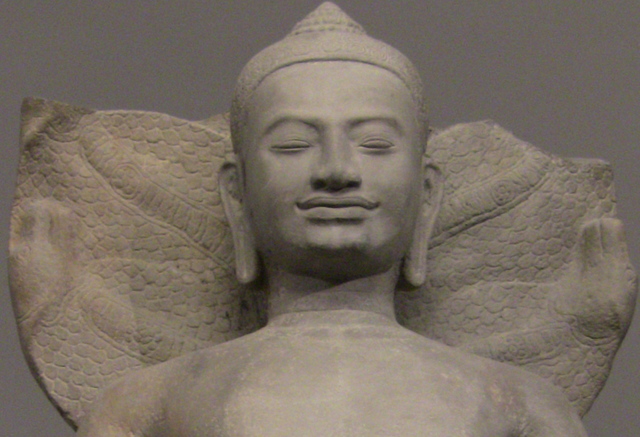
Lost City
Jayavarman II would rule for almost 50 years after his coronation and Mahendraparvata was one of three capital cities during his reign; the others being Amarendrapura and finally, Hariharalaya where he died in 850.
Mahendraparvata is located 40 kilometers north of the Angkor Wat complex, 45 kilometers north of Siem Reap town, on the slopes of what is now called Phnom, (Mount) Kulen; this once-great city predates the Angkor complex by 350 years.
Whereas Angkor was not entirely abandoned by local people, but lost and found again by the Western world, Mahendraparvata was thought lost forever. Angkor was largely neglected after the 16th century when the capital moved closer toward Phnom Penh: yet fourteen inscriptions found in the area and dated from the 17th century, testify to Japanese Buddhist pilgrims having established small settlements alongside Khmer locals at Angkor. The best-known inscription tells of Ukondayu Kazufusa, who celebrated the Khmer New Year at Angkor Wat in 1632.
One of the first Western visitors to the Angkor Wat temple was António da Madalena, a Portuguese friar who visited in 1586, declaring it had “all the refinements which the human genius can conceive of”. In 1860, the temple was effectively rediscovered by the French naturalist and explorer Henri Mouhot, who popularized the site throughout the western world with the publication of his expedition notes; in which he wrote:
“One of these temples, a rival to that of Solomon, and erected by some ancient Michelangelo, might take an honorable place beside our most beautiful buildings. It is grander than anything left to us by Greece or Rome…”
Mahendraparvata, was swallowed up by the mountain and reclaimed by the jungle. The 1936 expedition of French archaeologist and art historian Philippe Stern explored the Kulen highlands, where he discovered many previously unknown temples and Vishnu statues. He described it as the ‘first true temple mountain’, but the area, whilst being the source of rivers flowing south to the Tonle Sap, was very remote and very hard to access.
Wars and their remnants, (mines and unexploded ordinance) would halt further exploration for many decades, the area was known to be one of the final strongholds of the Khmer Rouge. Yet in 1973 and 1979 Jean Boulbet and Bruno Dagens managed to publish an archeological inventory and mapping of the Phnom Kulen area.
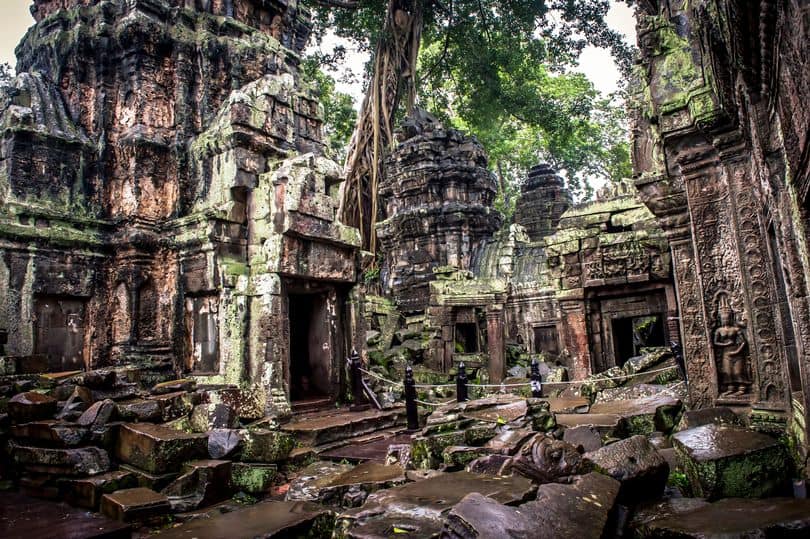
Sacred Mountain
Following up on the previous work of Stern, Boulbet, and Dagens, a multi-year and often dangerous archaeological expedition co-led by Damian Evans of the University of Sydney and Jean-Baptiste Chevance of London’s Archaeology and Development Foundation was undertaken. Finally, in 2013 some 1,200 years after the city was first developed, they announced their findings, the lost city of Mahendraparvata had finally been re-discovered.
A key feature of the expedition was the aid of airborne laser scanning technology called ‘LIDAR’, it was used to scan the Phnom Kulen area, and enabled the team to map the city’s layout. The Lidar results confirmed ground-based research conducted by these previous archaeologists but, according to JB Chevance, before this, we “didn’t know exactly how it all came together”.
Thirty previously unidentified temples were discovered, as well as the existence of an elaborate grid-like network of roads, dykes, and ponds forming a major city. Dr. Evans also noted that the imagery showed that the area had become deforested, and he theorized that the impact of this, and water management issues, led to the civilization’s decline and eventual abandonment of the city.
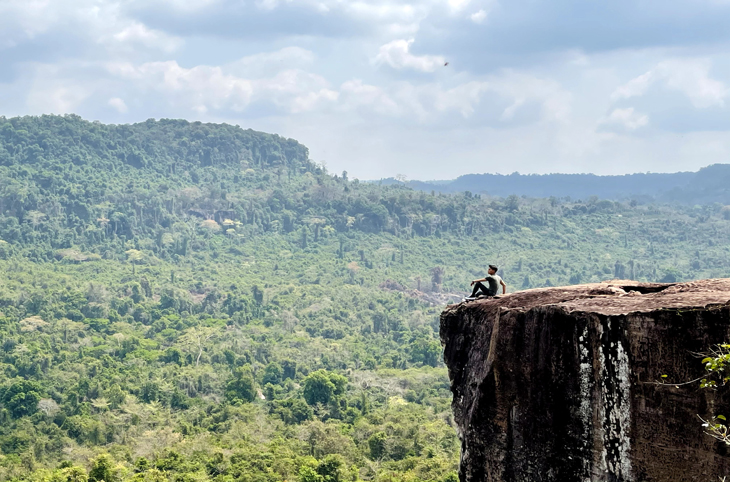
The River of a Thousand Lingas
Kbal Spean is an archaeological site on the southwest slopes of the Kulen Hills, it is situated along a 150m stretch of the Stung Kbal Spean River. The stone river bed and banks are elaborately carved with Hindu symbols of lingas, yonis, and many other symbols of the pantheon of Hindu gods and sacred animals. The carvings began in the 11th century and were completed sometime in the 12th century. King Udayadityavarman II is said to have consecrated a golden linga here in the year 1059 AD.
The Stung Kbal Spean River is a tributary of the Siem Reap river and it is believed the waters are blessed here before they flow down into Angkor.
The archaeological site was discovered in 1969 by ethnologist Jean Boulbet, but further exploration was cut off due to the Cambodian Civil War.
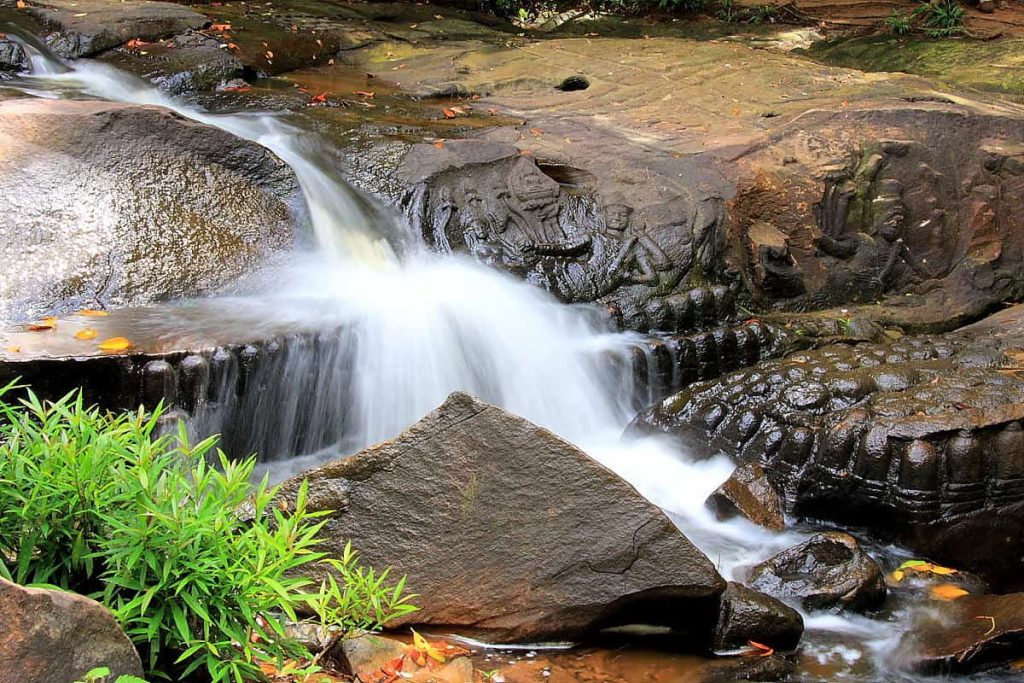
Mountain of Lychees
Today, the small mountain range is called Phnom Kulen, (Mountain of Lychees) and it sits inside the Phnom Kulen National Park, the plateau stretches for 40 kilometers and the average height is 400 meters above sea level, with the highest point being 487 meters. Lying south of the Dângrêk Mountains and north of Siem Reap, the range runs WNW-ESE.
Phnom Kulen is formed of sandstone and was an important quarry in Angkorian times, particularly to the southeast of the range, where a Pearic sub-group of tribal people known as the Samre lived and mined the stone.
The mountain is considered holy in Cambodia and of special religious significance to Hindus and Buddhists alike, many of whom come to the mountain in pilgrimage. Here, the 16th century built Preah Ang Thom temple houses the country’s largest reclining Buddha.
The national park has forest trails and the Chup Preah Stream has two scenic and popular waterfalls, which double as swim holes. The site was added to Cambodia’s national Tentative List for World Heritage in 2020.
Under Threat
As tranquil as this place is, and as historically and spiritually significant, this has not stopped encroachment and illegal logging threatening the entire area. Phnom Kulen was a stronghold of the Khmer Rouge until 1996. Due to its remote location, Phnom Kulen suffered enormously from the ravages of war and its fast-growing population remains today one of the poorest and most isolated in this province.
The majority of the villagers are farmers, traditionally growing rain-fed rice (in non-submerged fields), cassava, sweet potatoes, and maize. They practice the method of slash-and-burn agriculture, clearing and burning their cultivated plots for one year, then leaving them to the forest for about ten years, giving the soil time to regenerate.
For some time now, villagers have transformed plots of land traditionally rotated for rice production, into permanent cashew plantations. This breaks the cycle of slash-and-burn rotation and means villagers have to clear new forest plots to farm. Phnom Kulen National Park declared cashew tree cultivation illegal because it leads to an excessive rate of forest clearance: only 20% of the initial forest cover in the park remains today.
The government and international organizations such as the UNDP are now doing what they can to halt the deforestation here, one UNDP report suggested that without serious intervention the forest only had another 5 to 10 years. This would not only prove catastrophic for the area; it would acutely impact communities downstream of the forest’s rivers, as it provides all of the headwaters for the Siem Reap river.
“We can’t stop deforestation, we can only slow it down,” says Kim Hee of the United Nations Development Program (UNDP), which is helping the government conserve the forests in this and other selected areas nationwide. So far they’ve had some success; the government has placed markers around protected areas, and beefed up ranger patrols. They have planted new fast-growing trees for fuel and the penalties for illegal logging are much stiffer now.
Laudable as those measures are, they may not be enough. “There’s such high demand for wood,” says Mr. Kim. The biggest threat is illegal logging, whether it’s people who want to build a house or more powerful interests planning larger construction projects.
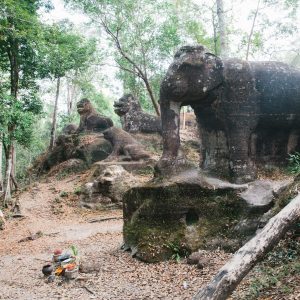
Cooking up a Plan
Several years ago, Cambodia’s Master Chef, Luu Meng was visited at Malis by the Minister of the Environment, His Excellency Say Sam Al; who had come to ask Luu Meng if he would join a delegation to visit the Kulen area, meet villagers and explore ways to protect the forests, the water and the temple ruins in the area.
When the delegates arrived at Kulen, they discovered the villagers had roasted a local pig in their honour, a long-standing tradition here. Luu Meng remembers how totally distracted he would become by the extraordinary flavours of the pig -whatever other important matters were being discussed at the table that day- Chef Meng was transfixed by the amazing meal laid out before him. He knew immediately that he just had to find out more about the fat little black pigs on Kulen Mountain.
Over several visits and many more discussions, Meng learned that people in the area were abandoning the traditional pig farming that had gone on for generations. The pigs were only semi-domesticated and relied on the forest to forage for food. The price the villagers were getting for their pigs at the local market had fallen too low, often less than the cost of rearing them. This saw more and more villagers turning to cashew farming, which had much better returns, (but was devastating for the forest), and worse, illegal logging to make fast money, needed in desperate times.
Meng soon devised a way to help, and along with the local government and foreign aid agencies such as Oxfam Italia, Meng had agreed to buy the Kulen pigs at twice their usual price in order to make rearing these special animals profitable and sustainable for the families and villages. In return, the Villagers would help protect the forest, vital to the sustainability of their pigs.
The pigs need the forest, it is their home, as one pig farmer pointed out, ‘the pigs only come to sleep in the pens at night and have an evening feed, they live in the forest, often for days at a time, mothers will have their babies in the forest and only return to the village after about one week, when their babies are strong enough. What will they do without the trees?”
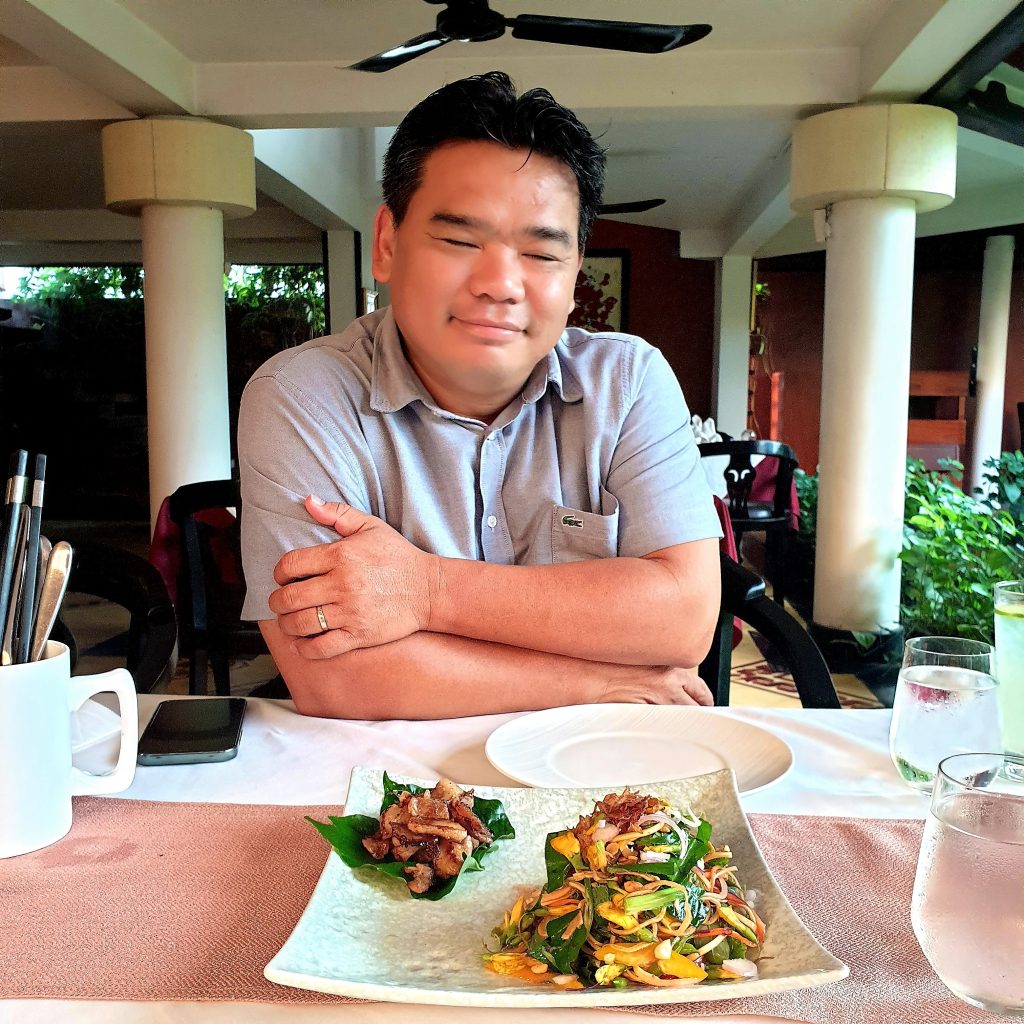
Just as Meng felt sure that it would, the ‘Kadaw Kulen Pig’ has thrived in Phnom Penh on his menus and (now) on many others. It has become famous across Cambodia, much sought after as the finest source of local pork in the country; something of a national delicacy, and a cultural and culinary treasure.
With international aid, government aid, and market support from people like Luu Meng and the Thalias Group, pig farming is again healthy and sustainable on Kulen Mountain and a dying industry is once again beginning to thrive. The farmers understand they need the forest to farm their pigs and are now actively trying to protect what is left for future generations.
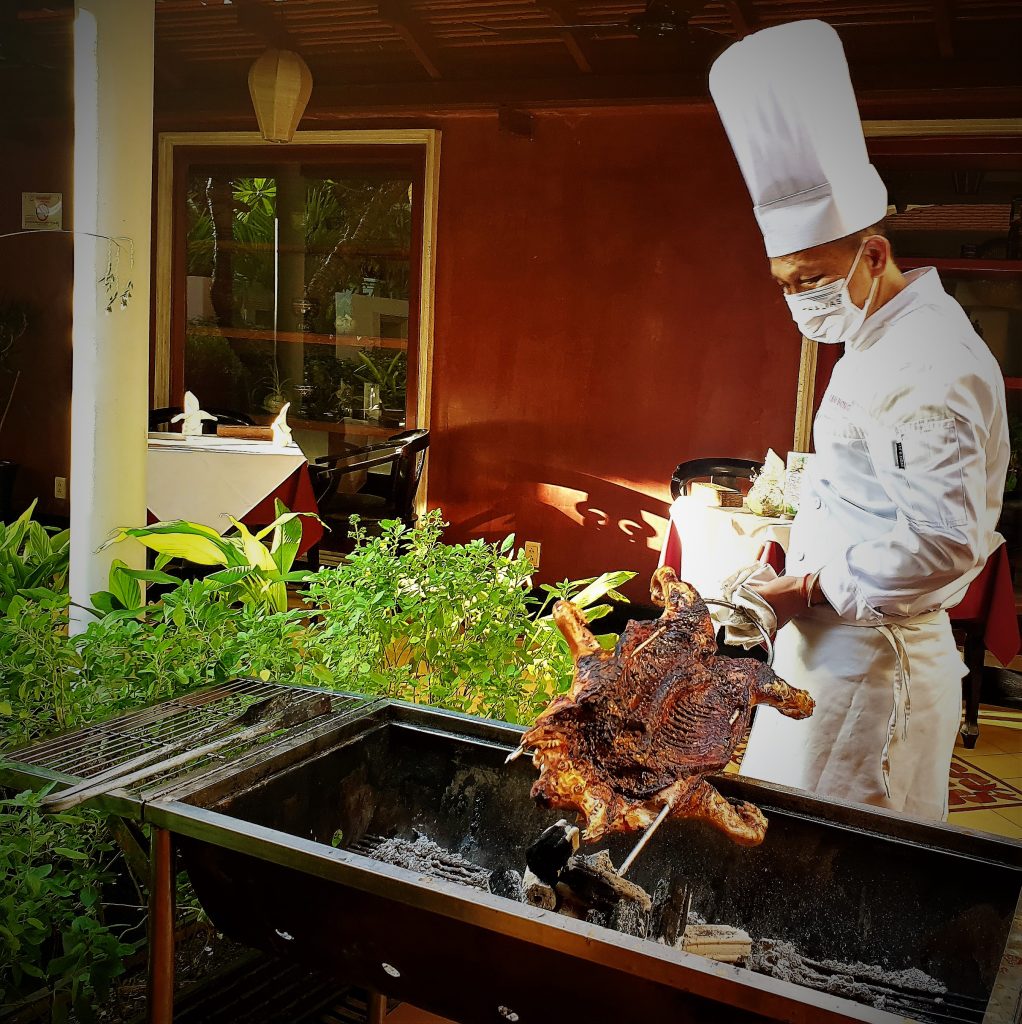
I recently ventured to Malis late one afternoon, where Luu Meng and Luu Hong had prepared for me a spit-roasted Kulen pig. I brought with me a bottle of fine Spanish white wine that I felt was a fitting gesture and it was with high anticipation that I discussed Meng’s Adventures into Kulen and the discovery of this unique, natural, organic, and sustainable solution he found to help save these people, their forest and the ancient relics of Phnom Kulen.
I love food and I love stories and when you can bring the two together in the kitchen infuse them with great care, respect and love, then you create something special to the culinary world.
Here, as I sat in the beautiful garden at Malis, talking about the jungles of Kulen with Cambodia’s greatest chef, my dear friend. From a master of the universe to a master chef, to the plate in front of me, I could smell the forests, I could taste the history and I could feel the people of the village; the Pork was juicy, tender, flavourful, and amazing all at once, and I thanked these pigs that give so much joy to so many, a national treasure indeed.
